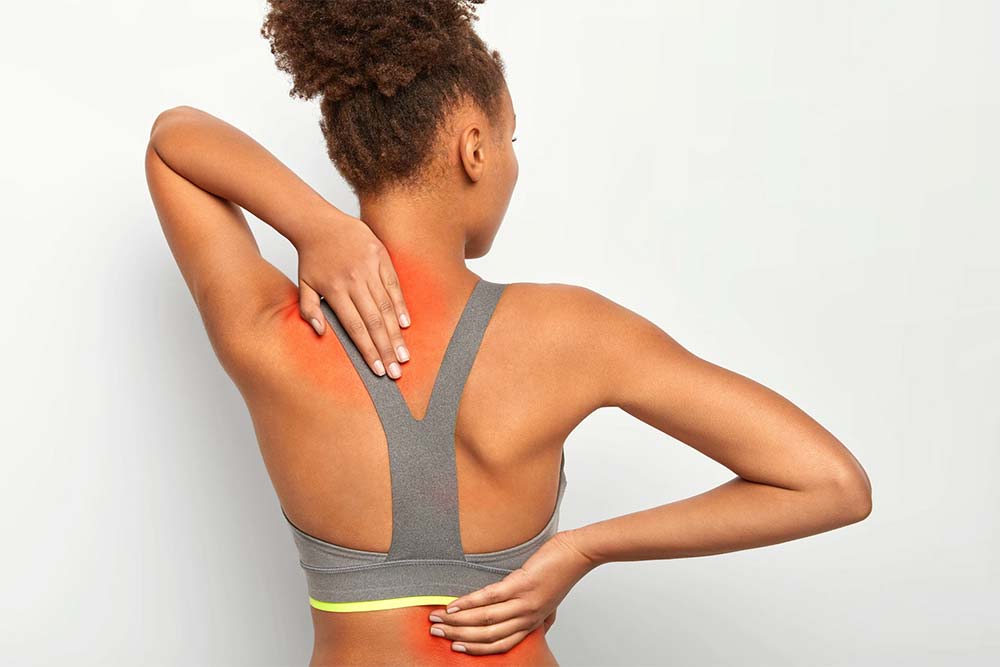The human back has a complicated system of muscles, bones, ligaments, tendons, and nerves, all of which are designed to take the brunt of the strain we inflict on our backs. As we get older, our back muscles, ligaments, and bones tend to lose some of their strength and elasticity, but in most cases, our bodies make up for it by overcompensating, which can lead to back pain.
Back pain is common, affecting nearly 80 million Americans each year. Often, it stems from a single injury or overuse, but persistent back pain can also be caused by an underlying medical condition. A spine specialist can perform a diagnostic evaluation to determine the origin of your back pain, which may include imaging, physical exams, and blood work. Without a proper diagnosis, back pain treatment must be targeted to treat the root cause of your pain. Common treatments include spinal surgery, medications, physical therapy, alternative therapies, and chiropractic care. If you’re looking for additional treatment options for back pain, you can check out some helpful clinical trials at Power.
Causes of back pain include:
Strain
Back pain is an issue that plagues many people. It can come from chronic issues like arthritis or from injuries from lifting heavy objects, but in many cases, back pain is the result of overuse. The strain sitting or standing in one place for prolonged periods of time puts on your spine can lead to pain in your back, upper legs, and feet.
According to the American Academy of Orthopedic Surgeons, one of the most common causes of back pain is strain. A strain occurs when something causes too much pull or stress on a muscle, ligament, or tendon, causing a small tear in the tissue. Strains usually occur from overuse or repetitive movements but can occur from new activities as well, such as lifting heavy objects or twisting awkwardly. In severe cases, strains can result in severe pain, tenderness, and swelling where the strain occurred.
Structural Problems
Back pain is very prevalent and affects 80 percent of adults at some point in their lives. Back pain is defined as an acute or chronic condition in which there is pain, weakness, or numbness in the back, and it often occurs in response to injury, disease, or normal wear and tear. The causes of back pain are far-ranging, but in the majority of cases, back pain is related to a structural problem—such as a slipped disc or degenerated spinal joints.
Back pain is one of the most common complaints that people bring to their doctors. In fact, the World Health Organization estimates that one-fifth of healthcare costs go toward back pain. And while back pain can be a symptom of an underlying structural problem, it can also be caused by multiple other causes, such as muscle or nerve issues, inflammation, or strain.
Movement and Posture
Most Americans will experience some sort of back problem in their lifetime. The American Chiropractic Association estimates that 70% of us will experience problems with our back at some point in our lives. The most common causes of back pain are poor posture, lifting heavy objects incorrectly, poor sleeping habits, and weak back muscles.
Arthritis
Today the most common cause of back pain is arthritis. Arthritis is inflammation of the joints. There are many different forms of arthritis. The most common is degenerative arthritis—osteoarthritis, which affects 70 million Americans. Osteoarthritis is a degenerative joint disease. It is most common in men and women over 50.
Many people think that back pain is just normal aging or that it’s caused by poor posture. It’s true that poor posture can cause discomfort in the lower back, but back pain can also be caused by medical conditions, such as arthritis.
Osteoporosis
Almost everyone will experience back pain at some point in their life. But now, there is growing evidence that lower back pain may be caused by osteoporosis. Researchers from the University of North Carolina, Chapel Hill analyzed more than a decade of data from over 700,000 women and found that patients with osteoporosis—the thinning of bone tissue—were 38 percent more likely to have back pain. In addition, it was concluded that the pain could be more severe and more limiting than what patients typically experience.
Spondylolisthesis
Spondylolisthesis is a painful condition in which one of the vertebrae in the spine slips forward over the one below it. This often occurs due to a developmental defect or injury, and it can lead to lower back pain as well as back and leg pain.
One of the most common causes of low back pain is spondylolisthesis. When this intervertebral disc is displaced, it can compress a nerve running between two vertebrae, causing pain in the back, hips, legs, and sometimes groin.

